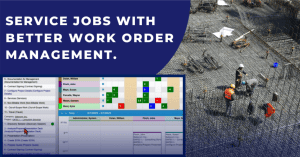By Mark E. Engelberg, CEO
TimeLinx Software
In the realm of field service management (FSM), efficient scheduling and dispatching are crucial to the success of any service business. By focusing on real-time updates and clear service communication, you ensure seamless information exchange between your back office and field technicians. As service operations grow more complex and customer expectations rise, having the right features in your FSM system becomes increasingly important. Looking ahead to the future of field service, from optimizing technician routes to enabling real-time communication, these must-have scheduling and dispatching features are key to enhancing productivity, improving customer satisfaction and driving business growth. This article explores the essential features every organization should prioritize in their FSM system to remain competitive.
Dynamic Scheduling
A critical feature of any FSM system is dynamic scheduling. Traditional static schedules often cannot accommodate unexpected changes such as urgent service requests, cancellations or technician availability. Dynamic scheduling provides visibility into factors like technician skills, location and workload, enabling managers to adjust schedules in real time. This ensures service appointments are assigned efficiently, maximizing technician utilization and minimizing travel time. Integrating dynamic scheduling into your field service processes improves overall operations, making it easier for service teams to adapt to changing demands.
Resource Optimization
Effective resource optimization is indispensable for streamlining field service operations. These features enable businesses to allocate resources—including technicians, equipment and vehicles—optimally. By considering technician skill sets, proximity to customer locations and service priorities, resource optimization ensures the right resources are assigned to the right tasks at the right time. This improves operational efficiency and enhances customer satisfaction by reducing wait times. In combination with field service platforms, resource optimization coordinates maintenance tasks, inventory management and time tracking for accurate billing, reinforcing the effectiveness of your management software.
Route Optimization
Route optimization helps minimize travel time and fuel costs while maximizing the number of service appointments technicians can handle each day. Advanced FSM systems use algorithms to calculate the most efficient routes based on factors such as traffic conditions, service priorities and technician availability. By optimizing routes, businesses improve service efficiency, reduce operational costs and enhance on-time performance. When combined with real-time data, route optimization supports service management strategies by allowing immediate adjustments if schedules or road conditions change.
Real-time Communication
Seamless communication between dispatchers, field technicians and customers is essential for effective field service management. Modern FSM systems offer real-time communication features such as mobile app solutions, two-way messaging and automated notifications. These capabilities allow dispatchers to communicate job details, service updates and scheduling changes to technicians instantly, ensuring everyone stays informed. Real-time communication also enables technicians to provide updates, request assistance and collaborate with colleagues, enhancing overall responsiveness. With a mobile app as part of the service management solution, you maintain real-time visibility into field operations, further improving the customer experience.
Integration with CRM Systems
Integration with your Customer Relationship Management (CRM) system is increasingly important for FSM systems. CRM integration gives service technicians access to relevant customer information, service history and preferences, enabling personalized service delivery and improved customer service. A comprehensive service software suite with CRM integration unifies all data related to scheduling, dispatching, maintenance and field operations. This integration creates a cohesive service management framework that boosts customer satisfaction and streamlines workflow for field service teams.
Balancing Features and Investment
The must-have and nice-to-have scheduling and dispatching features in an FSM system are essential for optimizing operations, improving efficiency and delivering exceptional customer experiences. However, the feature list must be balanced with the investment cost of the system. More features often mean higher expenses, so it is important to manage your needs list carefully. Staff may request various capabilities, but focusing on the benefits to field service and aligning with your budget ensures an effective investment.
From dynamic scheduling and resource optimization to route optimization and real-time communication, these features empower businesses to streamline processes, reduce costs and stay ahead of the competition. By investing in an FSM system with these essential features, organizations can unlock new levels of productivity, responsiveness and success in the field service industry. Combining these capabilities with predictive maintenance, advanced service management software and mobile functionality fosters real-time communication, delivering a better experience for your service teams, technicians and customers.
To learn more about how TimeLinx can help your business, contact us today.





